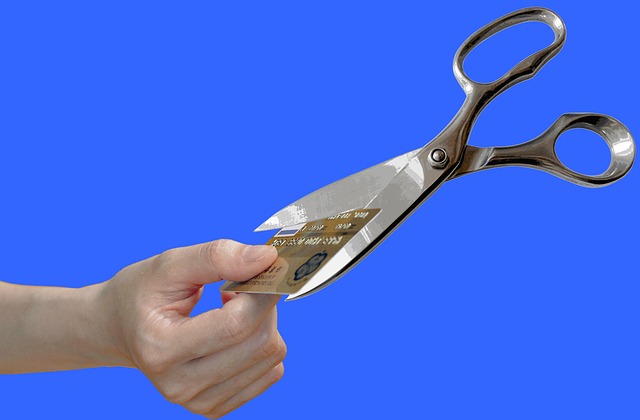Optimising Monthly Budget with Payment Tools
This article provides practical guidance for optimising a monthly budget using payment tools commonly available in the UK, including credit cards, contactless and mobile payments. It explains how to evaluate rewards, manage interest and fees, control billing and subscriptions, and strengthen security measures to protect savings and streamline transactions. The guidance focuses on realistic, verifiable approaches to reduce unnecessary costs and improve financial control over time.

Managing a monthly budget with payment tools demands more than basic tracking: it requires proactive routines, informed product choices and attention to how transactions translate into real costs. Credit cards, contactless payments and mobile wallets offer convenience and potential savings through rewards, but interest charges, hidden fees and forgotten subscriptions can quickly erode those benefits. This article outlines practical steps to monitor transactions, evaluate rewards, minimise fees and improve security, helping you maintain a stable monthly budget while using modern payment methods.
How to manage payments and transactions
Begin by consolidating how you monitor payments and transactions. Enable real‑time push notifications in your banking or card app and make a habit of reviewing monthly statements. Categorise spending into essentials, discretionary and subscriptions to identify where most income is going. Consider using a dedicated card or virtual card for recurring payments and subscriptions so you can spot and cancel unwanted services quickly. Reconciliation—comparing planned spending against actual transactions—helps you make realistic adjustments and prevents small, unnoticed charges from accumulating.
Do rewards really save money?
Rewards such as cashback, points or travel benefits can offset spending but only if they align with your habits. Calculate the annual monetary value of rewards you actually redeem and compare that to any annual fees or the potential cost of higher interest rates on the card. For people who travel frequently, travel rewards and insurance perks may add measurable value; for others, a simple no‑fee cashback card could be more economical. Avoid chasing rewards by spending more than necessary, as extra expenditure undermines the purpose of optimising a budget.
How does interest affect your budget?
Interest on unpaid balances is one of the biggest drains on a monthly budget. Know the card’s representative APR and the length of any interest‑free period. Paying the full statement balance each month typically avoids interest charges; carrying a balance converts short‑term convenience into relatively expensive borrowing. If you anticipate carrying balances occasionally, compare representative APRs and consider balance‑transfer offers only after checking transfer fees and the promotional period. Minimising revolving balances should be a priority when planning monthly finances.
How to reduce fees and manage billing
Fees include annual card fees, cash advance charges, foreign transaction fees and late payment penalties. Choose a card whose fee structure matches your behaviour: many UK credit cards have no annual fee and competitive rates for standard purchases, while premium cards charge an annual fee that may only be justified if you regularly use the included benefits. Automate bill payments to avoid late fees and review billing statements monthly to spot errors or duplicate charges. For travel, check foreign currency conversion fees and ATM charges to avoid unexpected costs abroad.
How to protect against fraud and improve security
Security directly affects your finances: fraud can lead to unauthorised charges, inconvenient disputes and potential liability. Use contactless and mobile payments (Apple Pay, Google Pay) with biometric authentication where possible, enable two‑factor authentication on banking apps, and set alerts for unusual transactions. For online shopping, consider virtual card numbers if available, and keep a close eye on billing statements. Report suspicious charges immediately to your provider and follow dispute procedures; quick action often limits financial loss and speeds up resolution.
Comparing providers: costs, travel benefits and subscriptions
Below is a representative comparison of typical card types and providers in the UK to illustrate common cost structures and features. These examples are indicative and meant to help you understand the trade‑offs; verify current terms directly with providers before applying.
| Product/Service | Provider | Cost Estimation |
|---|---|---|
| Cashback / No‑fee credit card | Barclaycard (representative products) | Annual fee: often £0; Representative APR: typically 20–30% APR; Key features: basic cashback tiers, occasional intro offers |
| Travel rewards card | HSBC / Halifax (representative rewards) | Annual fee: £0–£195 depending on tier; Representative APR: typically 18–30% APR; Key features: travel benefits, partner offers, sometimes insurance |
| Basic credit card | Lloyds Bank | Annual fee: often £0; Representative APR: typically 18–29% APR; Key features: straightforward purchase credit, occasional 0% introductory deals |
| App‑first banking / cards | Monzo / Starling (credit/overdrafts vary) | Annual fee: typically £0; Interest/overdraft costs vary; Key features: strong app controls, instant notifications, virtual cards |
Prices, rates, or cost estimates mentioned in this article are based on the latest available information but may change over time. Independent research is advised before making financial decisions.
Conclusion
Optimising a monthly budget with payment tools combines disciplined tracking, realistic evaluation of rewards, and careful control of interest and fees. Regularly review billing statements, cancel unused subscriptions, use app notifications to monitor transactions, and choose payment products that fit your spending profile. Strengthening security measures reduces the risk and impact of fraud, while informed comparisons of providers can reveal opportunities to lower costs or gain meaningful benefits. With consistent habits and periodic reviews, payment tools can support rather than undermine a stable household budget.



